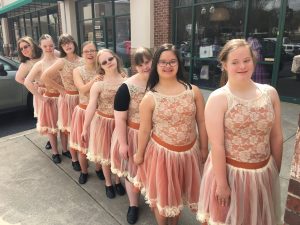If you are interested in starting a program for students with special needs in your area, good for you! It’s one of the most rewarding parts of my week. I made many mistakes when starting my program so I’ve compiled a list of helpful tips to make the experience smoother for you.
- Volunteer for an organization that focuses on students with special needs in your city or state. Learn about the community in your area and what their needs are – every area is different. Meet the families of the students who might be interested in your program and learn what needs are already being served. Find how you could provide something new and exciting to the community.
- Seek out a few families with children with special needs to discuss your ideas. Ask for their feedback about the class that you have designed. I found that the class I thought would be great was not exactly what they wanted. The easiest way to find out is to ask!
- Find your why. Just as Simon Sinek suggests, it’s important to know why you want to start the class and communicate that through all your marketing. In general, parents of children with special needs are extra-selective when it comes to choosing activities for their children and rightly so. They want to understand why you want to work with their children and what your goals are for the program. After they do, they will tell other parents and your program will grow.
- Focus on the students as dancers and not as having a special need. Parents what to know that you care about their children as children and not because they have a special need. Many times and especially with students with Down syndrome, their diagnosis is obvious and doesn’t need to be constantly referred to by the teacher. For example, when I introduce FSDC (Foster-Schmidt Dance Company for Down Syndrome) at a performance, I speak to their talent and work ethic only. I don’t announce that they have Down syndrome because it’s unnecessary. They are dancers first and that’s what matters.
- Set expectations that are similar to expectations of the other dancers at the studio. Create clear expectations that can be met regardless of the obstacles that may come up, limitations that may exist, and the many variables with each student. Committing to a program like this means meeting the students where they are on that day of class, providing the appropriate prompts for them to accomplish the skill, and not giving up on them if they do not do it correctly the first or even 100th time. Use incremental steps that all work towards a larger goal, be patient, and your students will progress.
- Do your research. Speak with people-first language. This means always saying “students with special needs” or “with Down syndrome”, not “Special Needs Students” or “Down syndrome Students”. (Down syndrome is always written with a big D and little s by the way). It helps to be knowledge-able of the vocabulary, what phrases are acceptable, and what challenges the community has. Read articles that discuss the government funding and national organizations and ask questions.
In the end, your program is your program. Just like any other classroom, you want to make it your own. Seek feedback from parents and research the field to make educated decisions but trust your judgement and vision above all.
Good luck on your journey to starting your own program!
Resources:
Find your local organizations: http://www.ndss.org/, http://nationalautismassociation.org/
Simon Sinek -Find your Why: https://www.youtube.com/watch?v=Tji0lUIG0eg
People First Language: http://www.inclusionproject.org/nip_userfiles/file/People%20First%20Chart.pdf


These are really wonderful ideas in concerning blogging.
You have touched some good things here. Any way keep up wrinting.
Thanks for reading! Do you have a program in your area? We’d love to connect with you.